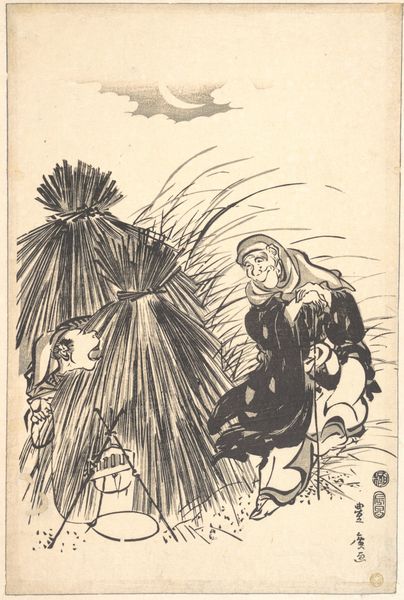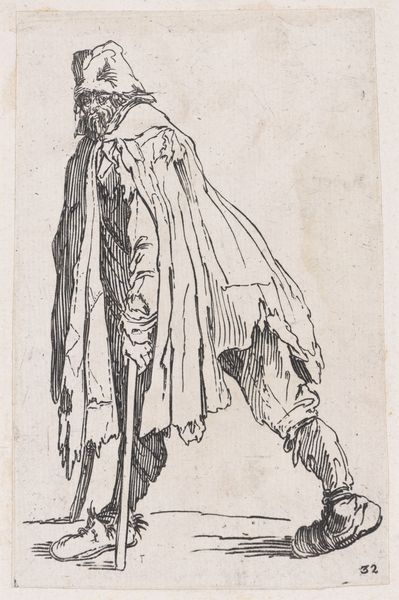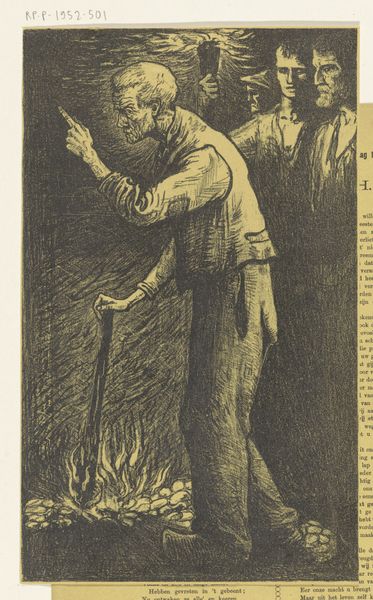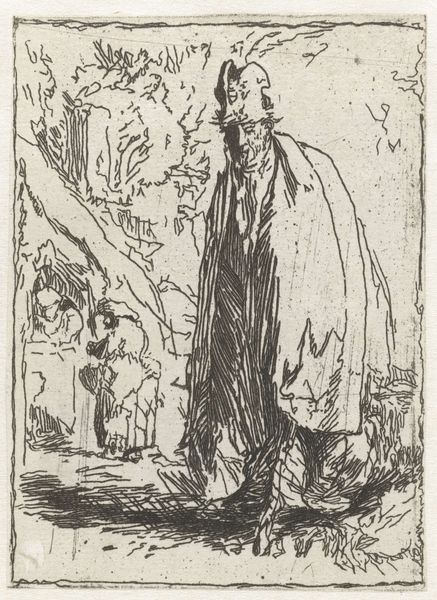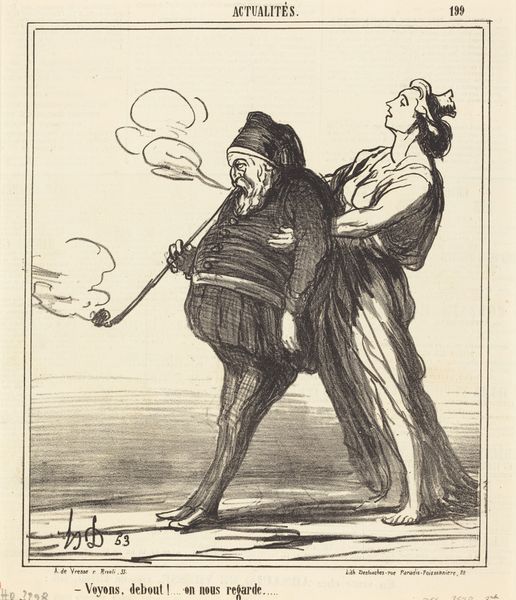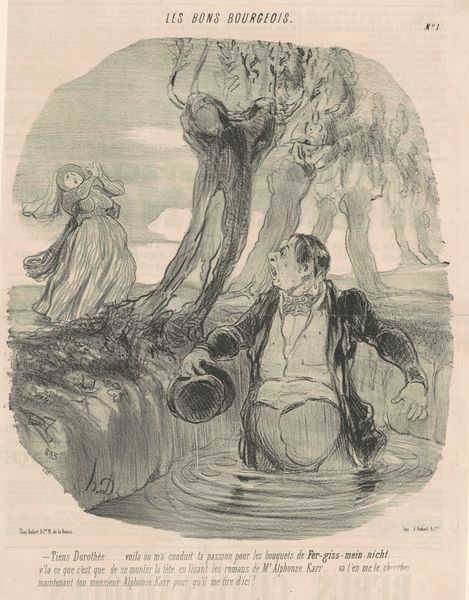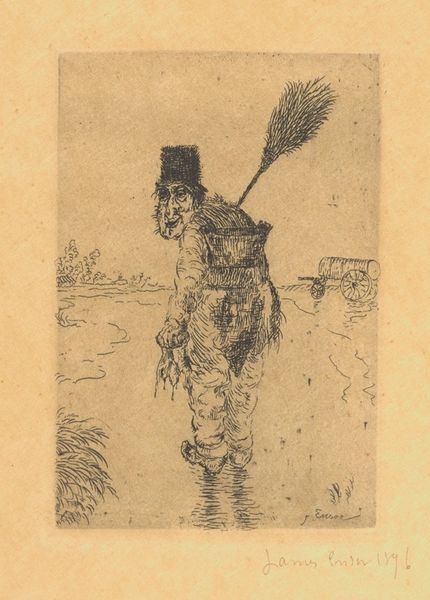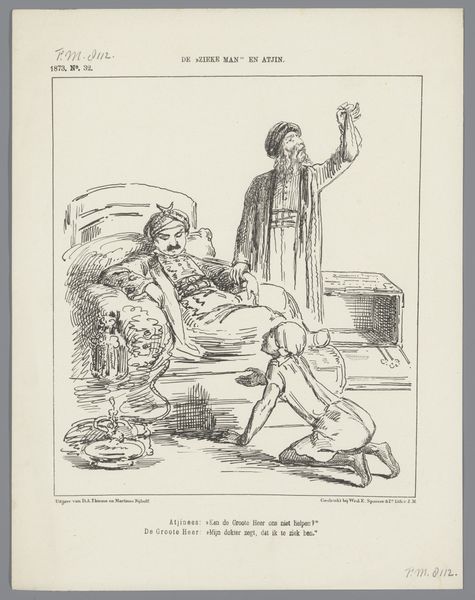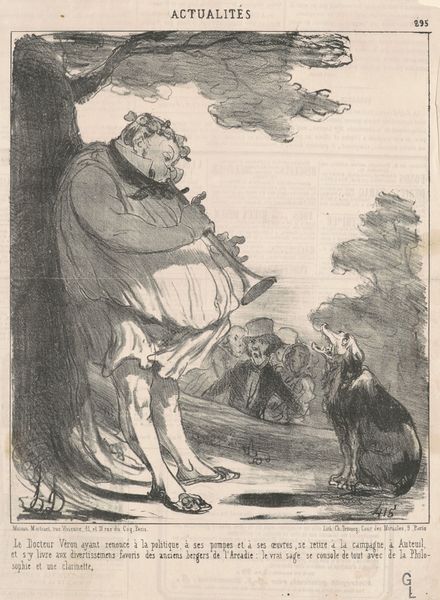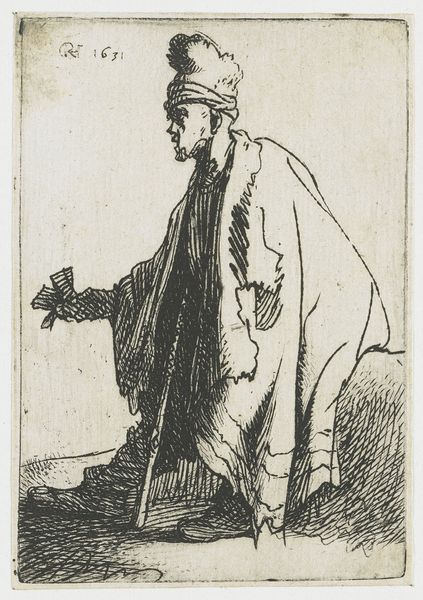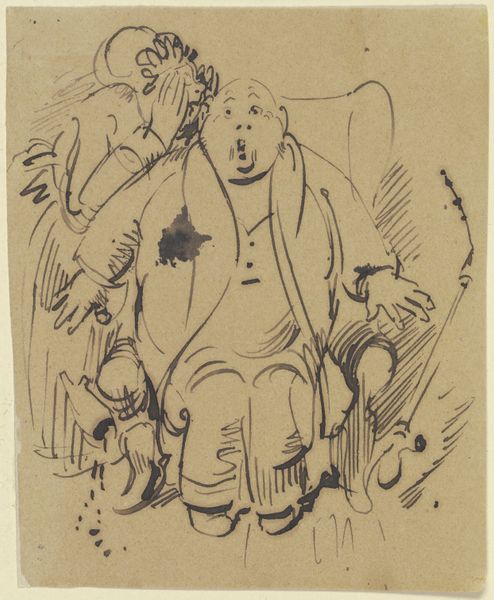
drawing, ink, pen
#
drawing
#
imaginative character sketch
#
quirky sketch
#
narrative-art
#
pen sketch
#
caricature
#
cartoon sketch
#
figuration
#
personal sketchbook
#
ink
#
ink drawing experimentation
#
pen-ink sketch
#
sketchbook drawing
#
pen
#
storyboard and sketchbook work
#
sketchbook art
Dimensions: height 210 mm, width 189 mm
Copyright: Rijks Museum: Open Domain
Curator: This ink and pen drawing, dating roughly from 1900 to 1935, is titled "Eerste Kamer en de Ongevallenwet." Editor: Well, that’s quite something! Immediately, I’m struck by its visceral rawness and that feeling of vehement opposition emanating from the figure. The medium really enhances that sense of urgency. Curator: Precisely! And if we unpack the imagery, we see the artist portraying a rather formidable woman—clearly representative of the “Eerste Kamer,” or First Chamber of Parliament—holding up a dripping, almost dissolving infant labeled “Ongevallenwet,” which translates to "Accident Law." Editor: So, the material reality here – ink on paper – helps underscore a potentially vulnerable socio-political point about fragile legislature? How it could, metaphorically, dissolve without proper care? Curator: Exactly. Given the era, we can assume this piece likely reflects anxieties and struggles around early social welfare laws and workers’ rights. It likely critiques the resistance within the First Chamber to such legislation, depicting it as something sickly, neglected. The female figure becomes the embodiment of power rejecting its responsibility of care. Editor: And think about the labor inherent in creating a drawing like this. It suggests a very individual, hands-on protest – one artist’s way of intervening in a debate about workers’ rights by representing them almost as dependent children. Curator: Absolutely, placing it in the context of social movements, feminist perspectives allow us to question why care and dependency are figured in this way – almost distastefully. Does it imply that social welfare emasculates, infantilizes, and who benefits from such a framing? Editor: Interesting… So, the artist chose these accessible, reproducible materials of pen and ink not just for the statement, but perhaps also to allow it to be quickly copied and circulated, as part of popular visual culture of the time, as the law could also affect all parts of material production! Curator: Indeed! It pushes us to think critically about not just what is being depicted, but also the artist’s intentions and the social impact such images could have had then – and what that legacy is, now! Editor: Looking again, focusing on the material choices has illuminated for me the drawing's intended role: part protest, part political analysis, all communicated through the act of creation itself. Curator: Agreed. Seeing it now, through this discussion of material and social implications, gives added perspective to its significance!
Comments
No comments
Be the first to comment and join the conversation on the ultimate creative platform.
